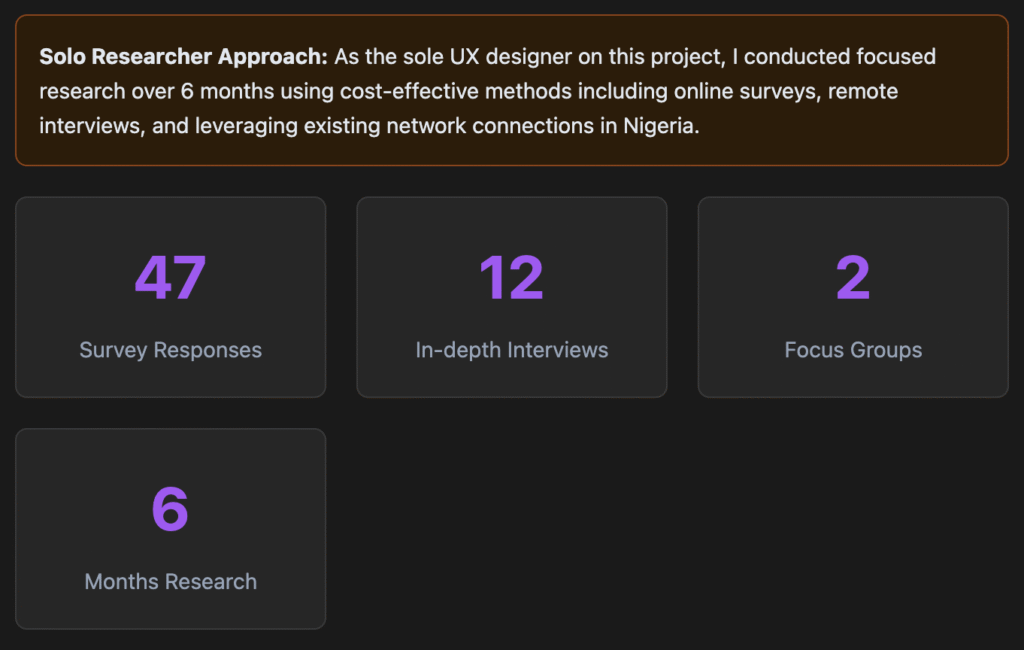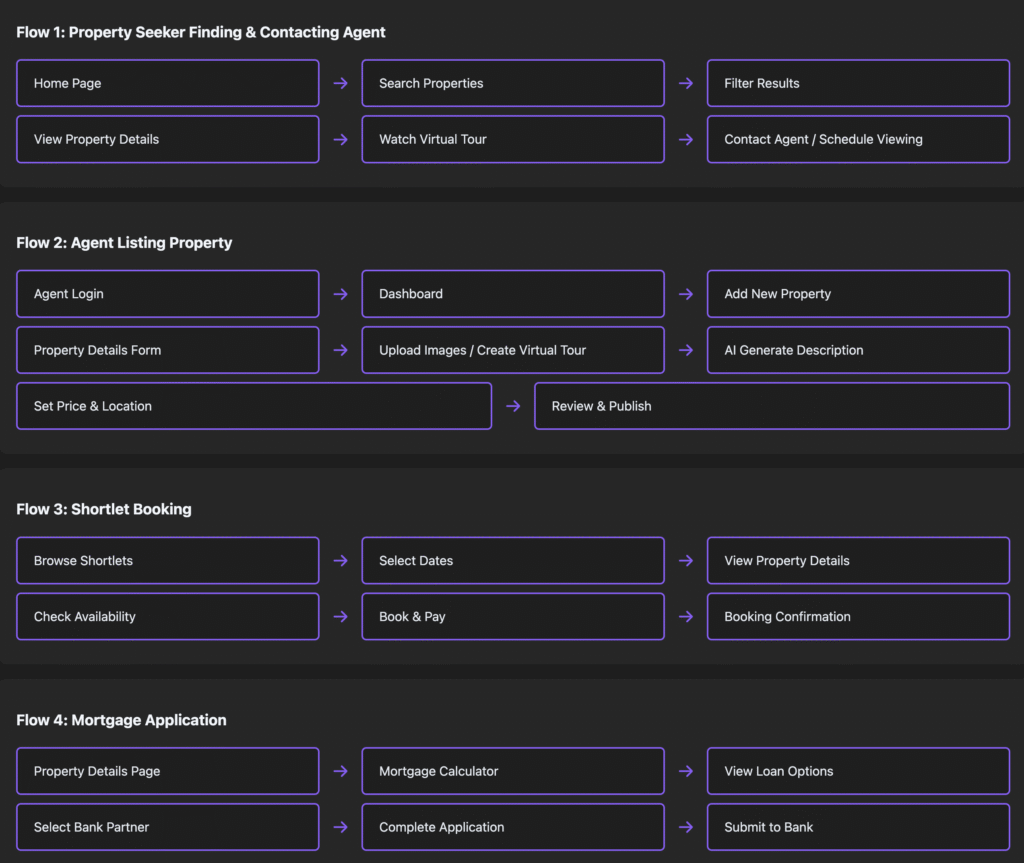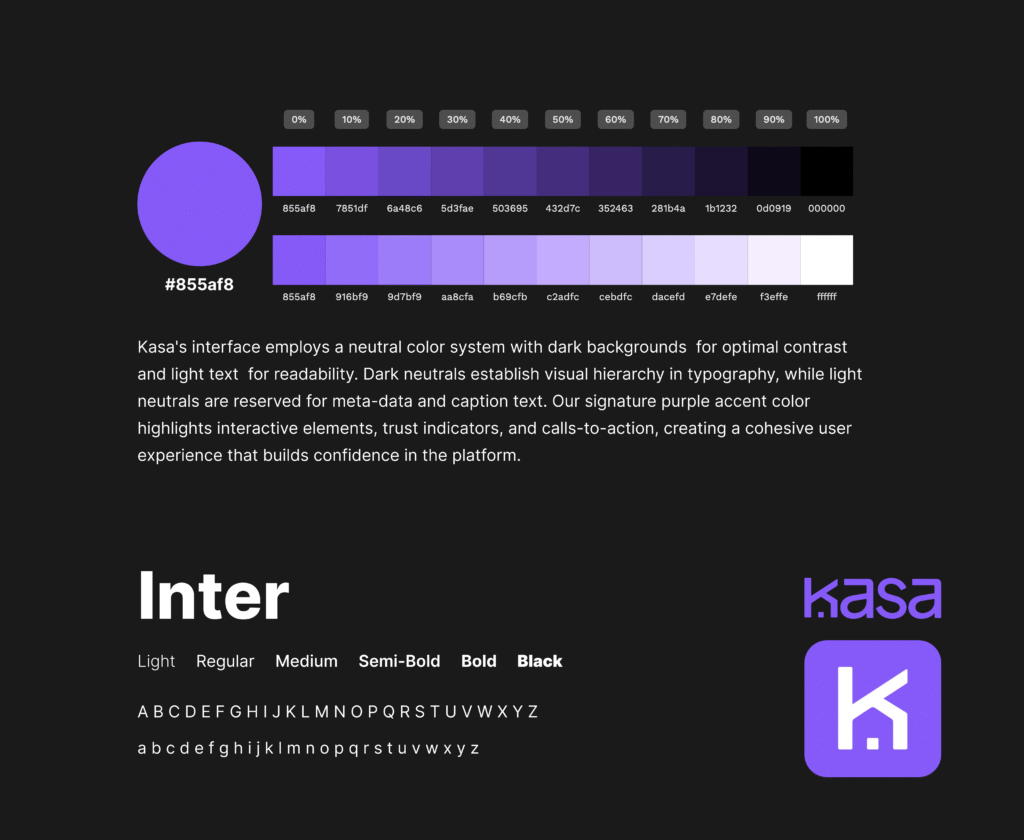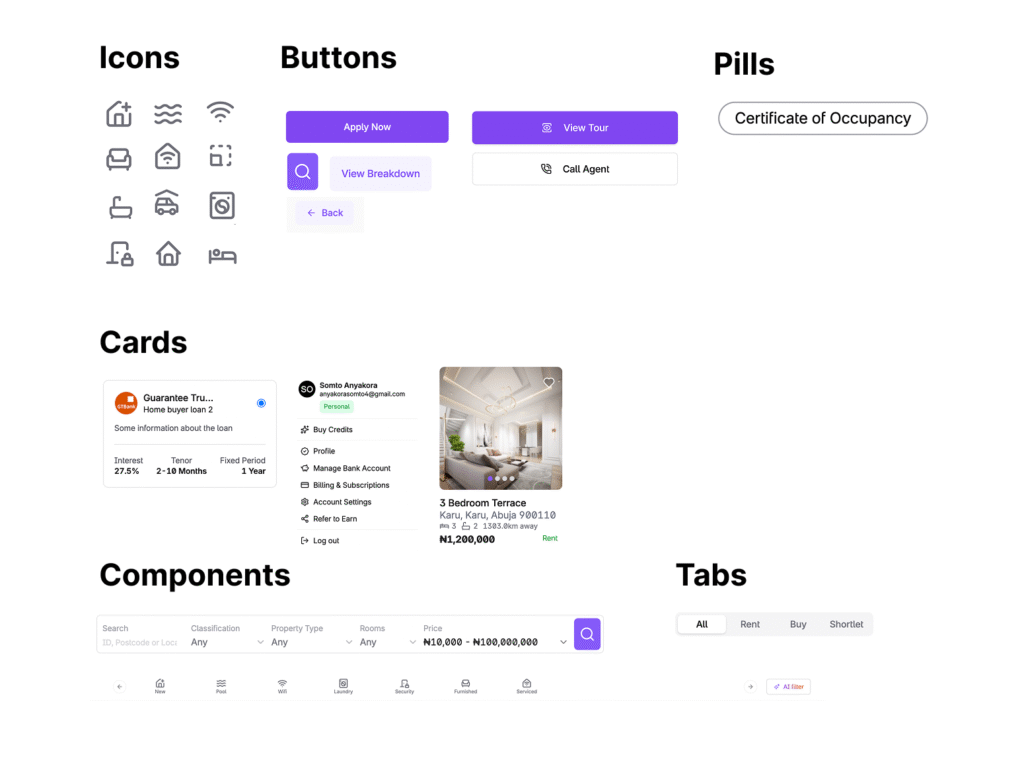KASA
Kasa is a comprehensive real estate technology platform designed to revolutionize property transactions in Africa. Our platform addresses market inefficiencies through cutting-edge technology and transparency-first principles. We provide virtual tours that allow prospective buyers and renters to explore properties remotely, eliminating unnecessary physical visits and expanding market reach.

The Challenge
The African real estate market, particularly in Nigeria, suffers from systemic issues that create barriers for both property seekers and real estate professionals. How might we create a transparent, technology-driven platform that addresses fraud, accessibility, and trust issues while serving the unique needs of the African market?
Research
Problem Definition

Market Research Findings
Market Size & Opportunity:
User Personas


Design Solutions
Key User Flows

Key User Screens
Key Dashboard Screens


Challenges & Solutions
Challenge
KEY INSIGHTS
-
Trust is Paramount
In markets with fraud concerns, visible trust indicators are essential
-
Mobile-First is Critical
African users prioritize mobile experience
-
Cultural Context Matters
Local market understanding is crucial for success
-
Transparency Drives Adoption
Clear pricing and processes build user confidence
-
Progressive Enhancement
Features should work on basic devices and improve with capability
Conclusion
The Kasa Africa project demonstrates how thoughtful UX design can address systemic market problems while creating business value. By focusing on trust, transparency, and mobile accessibility, we created a platform that serves the unique needs of the African real estate market.
The success metrics validate our user-centered approach, showing significant improvements in user satisfaction, business outcomes, and market trust. This project reinforced the importance of deep user research, cultural sensitivity, and iterative design in creating meaningful digital experiences.